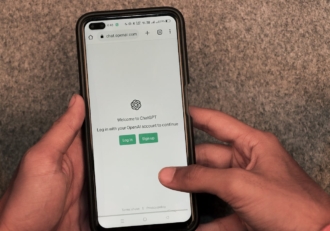Artificial intelligence (AI) is revolutionizing how we tackle everyday tasks, from crafting engaging marketing content to writing code snippets in seconds. At the core of these powerful AI tools lies a fundamental yet often overlooked element—the prompt. How you write your prompts matters a lot. Good prompts lead to helpful responses, whether you use GPT-4, Claude, or another AI. Poorly crafted prompts often result in generic answers. Take time to think about what you want. This can help you get insightful and creative results that meet your needs.
In this blog post, we’ll explain how AI models interpret prompts, best practices for crafting effective ones, and a list of 60 powerful AI prompts for various use cases. By the end, you’ll have the skills to fine-tune your prompts to get AI-generated content that’s accurate and engaging to your goals.
What exactly is an AI prompt?
An AI prompt is the question, instruction, or command you provide to an AI model to generate a response. Think of it as giving directions to a highly intelligent assistant—the more apparent and specific you are, the better the results. Whether you’re looking for a compelling tagline, an in-depth market analysis, or a short story idea, the quality of the AI’s output hinges on the clarity of your prompt.
Businesses use AI prompts to create product descriptions and marketing copy. They also help with automated customer service responses. Writers use these prompts to brainstorm creative ideas. With AI adoption on the rise, structuring prompts is becoming an increasingly valuable skill.
According to a 2023 report by Grand View Research, the global generative AI market is expected to reach $109.37 billion by 2030, growing at a CAGR of 34.6 percent. AI prompts are growing quickly. They are becoming more valuable in marketing, education, software development, and other industries. From guiding AI chatbots to creating entire product descriptions, AI prompt examples can help you unlock new levels of productivity and creativity.
How to write effective AI prompts
Although many AI models can understand a wide range of instructions, the way you structure your prompts significantly impacts your results. Different models (like GPT-4, Claude, Gemini, or DeepSeek) have varying capabilities and constraints, so learning how to frame your prompt correctly is crucial.
- Be specific and clear:
A vague prompt like “Write a story” will produce a generic response. Instead, try: “Write a 200-word mystery story set in a rainy city at midnight.” Providing more details guides the AI toward a better response. - Include necessary context:
AI agents, such as Jotform AI Agents, rely on context. Say so if you want the AI to assume a specific voice or style. For example: “From the perspective of a tech-savvy travel blogger, describe the top five hidden beaches in Spain.” - Open-ended vs directive prompts:
- Open-ended prompts: “What are some creative AI writing prompts for short stories?”
- Directive prompts: “List 10 AI writing prompts for short stories, each with a unique main character.”
Open-ended prompts invite broader answers, while directive prompts tell the AI exactly what format or type of response you’d like.
- Use formatting for complex requests:
For more detailed outputs, structure your request step by step. For example, “Outline a three-part blog post about AI art prompts, including an introduction, main examples, and conclusion.” - Model-specific considerations:
Each AI model has unique strengths. GPT-4 prompt examples might highlight in-depth reasoning, whereas Claude might excel at summarizing lengthy texts. If you know a model’s specialty, tailor your prompt to leverage that advantage.
Best AI prompt examples for different use cases
Below is a curated list of AI prompt examples across various categories. These prompts are designed to serve as starting points for everything from writing and marketing to coding and design. Feel free to adjust your projects’ specifics and inspire creative AI prompts in ways that best suit your needs.
AI writing prompts
Whether you’re an aspiring novelist or a busy professional, AI writing prompts can help you overcome writer’s block, craft compelling narratives, or polish your text for clarity.
- “Write a short fantasy story about a hidden kingdom in the clouds.”
- “Create a poem that explores the theme of ‘lost time.”
- “Generate a world-building outline for a sci-fi universe inhabited by sentient robots.”
- “Rewrite the following paragraph to make it more engaging and concise: [Insert paragraph].”
- “Summarize this 2,000-word article into a 150-word abstract.”
- “Draft a formal email to a potential business partner introducing our new product line.”
- “Write a compelling tagline for an eco-friendly clothing brand.”
- “Create a character profile for a detective in a 1920s-inspired mystery.”
- “Generate a professional LinkedIn post describing the benefits of remote work.”
- “Outline a three-chapter structure for a young adult romance novel set in Paris.”
AI prompts for business and marketing
AI-generated content is changing how businesses talk to their target audiences. It impacts everything from email subject lines to social media posts and customer service responses.
- “Compose an email subject line to announce a 20% off summer sale for a cosmetics brand.”
- “Generate five Instagram caption ideas for a new organic juice launch.”
- “Write a short LinkedIn post celebrating a company’s milestone of 5,000 customers.”
- “Draft a chatbot greeting message for a customer seeking information about our return policy.”
- “Write a concise blog post introduction for a marketing agency discussing lead generation strategies.”
- “Propose five Facebook ad headlines for a home fitness program.”
- “Create a customer support response for a user who received a damaged product.”
- “Craft a tweet highlighting the eco-friendly aspects of our packaging.”
- “Generate an SEO-optimized meta description for a blog post about AI chatbot prompts.”
- “Outline a marketing email that describes new features of our project management software.”
AI prompts for coding and development
AI can help speed up coding tasks, propose bug fixes, and assist in technical documentation. Use these prompts to save time and streamline development workflows.
- “Generate a Python function that converts Celsius to Fahrenheit.”
- “Debug this JavaScript snippet that isn’t handling form submissions correctly: [Paste code].”
- “Write a SQL query to find all customers who made more than three purchases last month.”
- “Explain the concept of object-oriented programming in simple terms for a beginner.”
- “Outline the steps to integrate a payment gateway into an e-commerce website.”
- “Write a brief piece of software documentation for setting up a Node.js project.”
- “Provide a sample HTML and CSS layout for a minimalist landing page.”
- “Suggest optimizations to reduce the runtime of this Python script: [Paste code].”
- “Generate a quick reference guide for Git commands, formatted as bullet points.”
- “Create a troubleshooting checklist for common Docker container issues.”
AI prompts for learning and research
If you’re studying for an exam or exploring a new topic, these AI writing prompts can help you quickly gather facts and insights.
- “Generate a 10-question multiple-choice quiz about world geography.”
- “Summarize the main arguments of a scholarly article on climate change adaptation.”
- “Create a study guide for the key events of the American Civil War.”
- “Explain the concept of photosynthesis at a 5th-grade reading level.”
- “Translate this short paragraph from English to Spanish: [Insert text].”
- “Outline a lesson plan for teaching basic algebra to high school students.”
- “Provide three credible sources on the impact of AI in healthcare, with short summaries.”
- “Prepare a quick glossary of terms for quantum computing beginners.”
- “Fact-check the claim that honey never spoils, and list reputable references.”
- “Draft a final exam with both true/false and essay questions on introductory psychology.”
AI prompts for productivity and personal use
Use AI to handle your everyday tasks, from scheduling to meal planning, freeing you up to focus on what truly matters.
- “Create a to-do list for planning a surprise birthday party.”
- “Generate a weekly meal plan for a vegetarian diet under 2,000 calories daily.”
- “Outline a daily fitness routine focusing on cardio and core workouts.”
- “Propose five quick brainstorming ideas for my upcoming team-building event.”
- “Suggest a plan for learning the basics of the German language over three months.”
- “Set up a monthly budget template for tracking expenses and income.”
- “Give me a list of 10 self-care activities to reduce stress.”
- “Provide a structured approach to organizing my digital files and folders.”
- “Generate a morning routine schedule to optimize productivity before work.”
- “Offer tips for balancing work, study, and leisure time effectively.”
AI prompts for graphic images (Text-to-Image AI Prompts)
Text-to-image AI prompts allow you to describe a desired image in words, which models like Midjourney or DALL·E then convert into visual art.
How text-to-image AI works
Models are trained on massive datasets of images and text, learning how specific words relate to shapes, colors, and compositions. When you input a descriptive prompt, the AI renders an image that matches your instructions as closely as possible.
Best practices for writing effective AI image prompts
- Be descriptive about style: Specify if you want a cartoon look, realism, or a watercolor painting.
- Mention key elements: Colors, objects, characters, and lighting.
- Provide context: If it’s a product mockup, mention the brand style guidelines.
Example prompts for different art styles
- “A watercolor painting of a sunflower field at sunrise, with pastel hues.”
- “A cyberpunk cityscape at night with neon purple lights and towering skyscrapers.”
- “A minimalist black-and-white sketch of a cat looking at the moon.”
- “A surreal desert scene under a swirling galaxy sky, in the style of Salvador Dalí.”
- “A digital illustration of a medieval knight battling a fire-breathing dragon.”
- “A vibrant pop-art portrait of a jazz musician playing the trumpet.”
- “A photorealistic rendering of a futuristic electric car in front of a modern house.”
- “A charcoal-style portrait of a historical figure, drawn with dramatic shading.”
- “A concept art design of an underwater city illuminated by glowing corals.”
- “An isometric illustration of a cozy bookstore interior, filled with vintage details.”
Advanced AI prompting techniques
Once you’ve experimented with basic prompts, you can take your best AI prompts to the next level by incorporating advanced strategies:
- Step-by-step requests:
Break down complex tasks into smaller steps. For instance, “First, list the main points of this article. Then, generate a concise summary in bullet form, and finally rewrite it in a more casual tone.” - Few-shot learning:
Provide a few examples of the desired input-output pairs. For example, “Keep the humor and remove jargon when rewriting the text. Example input: ‘Our strategy will revolutionize…’ Example output: ‘We’re excited about a new plan…’” - Zero-shot learning:
Ask the AI to do a task without examples, which can work well for simpler or well-known tasks. For instance, “Translate this sentence into French: ‘Hello, my name is Sarah.’” - Chain-of-thought prompting:
Encourage the AI to show its reasoning. For tasks like math problem-solving or logical deductions, you might add, “Explain your reasoning step by step before giving the final answer.”
Common mistakes to avoid when using AI prompts
Even the best AI prompts can fail if they lack clarity or context. Here are some difficulties to watch out for:
- Being too vague:
Prompts like “Tell me something interesting” can lead to generic or irrelevant answers. Specify what you mean by “interesting.” - Ignoring context:
Your AI might make incorrect assumptions if you don’t provide background details. Therefore, be clear about the scenario, audience, and format. - Not specifying the output format:
Whether you want a table, list, or paragraph, be explicit. This helps AI chatbots structure their responses effectively. - Overlooking model limits:
Some models have token limitations. If your prompt is too long, the AI might truncate or ignore parts of it. Keep it concise when necessary. - Forgetting to proofread:
Always review AI-generated content for accuracy and tone. AI is powerful but not infallible.
Use prompts to create AI Agents that can handle tasks for you
If you’ve ever wished you could automate tasks like customer support, lead generation, or education, Jotform AI Agents makes it possible without any coding. These conversational agents learn from your data, allowing them to field queries, ask follow-up questions, and adapt to your workflows.
With Jotform’s AI-powered tools, you can transform ordinary forms into dynamic experiences. Users interact with an AI agent trained on your documents or URLs. This agent answers questions, provides clarifications, and collects data more efficiently. The process is simple:
- Start from scratch, pick a template, or clone an existing form
You can choose a predefined layout or import one you already have, cutting down on setup time. - Train the AI with documents or URLs
Upload any relevant material or paste links so the AI can learn about your products, policies, or subject matter. - Customize using the Agent Builder
Personalize the AI agent to match your brand voice, add relevant context, and specify the questions it should ask. You’ll have a custom AI-powered form ready to handle tasks in marketing, education, customer service, and beyond.
Build Your Custom AI Agent in Minutes
Businesses and individuals can use Jotform AI agents to collect information more engagingly. Whether setting up a quick marketing survey or a detailed customer service flow, AI can guide people through the process, reducing friction and improving response rates.
Optimize AI prompts for maximum impact
Crafting effective AI prompt examples is both an art and a science. By being clear, specific, and mindful of the context, you can guide AI models to produce incredibly diverse and insightful outputs. AI-generated content offers endless possibilities. You can use AI to write prompts for storytelling. Also, AI art prompts create stunning visuals.
Remember these key takeaways:
- Structure your prompts carefully: A good prompt can make the difference between a vague response and a highly targeted one.
- Experiment and refine: Test different approaches—from open-ended queries to step-by-step instructions—to find the best way to achieve your goals.
- Stay curious: The world of AI is evolving rapidly, so keep learning about new prompting techniques, tools, and use cases.
Now that you have a robust collection of AI prompt examples, why not try them out in your applications? Try these prompts when coding a new feature, writing a newsletter, or launching an AI chatbot. They can reveal hidden capabilities you might not know about. Start refining your AI prompts today and unlock the full potential of AI-powered solutions!
Photo by Alena Darmel
































































Send Comment: